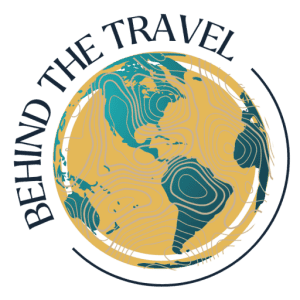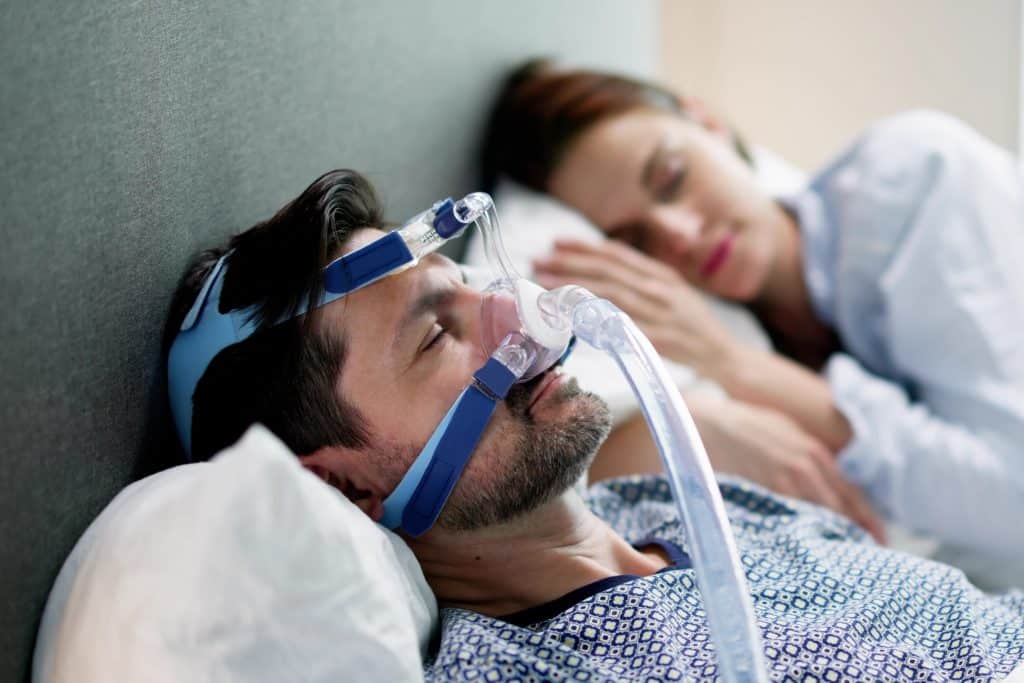Traveling with a CPAP machine shouldn’t mean giving up on restful sleep. Many people fret about finding distilled water, which helps prevent mineral buildup in CPAP equipment. This guide provides practical methods to keep distilled water handy and in line with TSA rules, ensuring uninterrupted therapy on your adventures. Here, you’ll find strategies based on common experience (and a dash of humor from Rick Steves), making your CPAP travel simpler.
Why Distilled Water Is Critical for Your CPAP Machine
Using the correct water type in your CPAP humidifier chamber is key for both device longevity and your respiratory well-being. Distilled water has negligible minerals or bacteria that might harm your equipment. For further insights, see this detailed guide from the Sleep Apnea Association. Regular tap water carries minerals like calcium and magnesium that leave deposits over time, creating breeding grounds for bacteria and damaging the CPAP’s heating element. Meanwhile, spring water and bottled mineral water often have similar, or even higher, mineral content.
| Water Type | Mineral Content | Risk of Buildup | Suitable for CPAP? |
| Distilled | None | None | Ideal |
| Purified | Very low | Minimal | Short-term use only |
| Bottled | Variable | Medium to High | Not recommended |
| Tap | High | High | Never use |
In 2025, distilled water remains inexpensive, typically $1.10 to $2.00 per gallon, boosting its accessibility.
TSA Guidelines for Distilled Water in 2025
The Transportation Security Administration (TSA) considers distilled water for CPAP use a medical necessity. However, certain rules still apply. Let officers know you have medically required liquids, remove your CPAP machine from its bag for X-ray screening (like you would a laptop), and be ready for additional checks.
You can pack larger quantities of distilled water in checked baggage. If you’re anything like Rick Steves, you might find that a few well-sealed containers ease any concerns about spills. It’s better than trying to charm airport security with travel tales while you juggle water bottles.
Strategic Packing: Preventing Leaks and Damage
Selecting Leak-Proof Containers
Opt for solid, screw-top containers or travel-specific water bottles with strong seals. Test them by filling, flipping them upside down, and checking for leaks over a sink. Bringing smaller bottles can simplify TSA screenings and daily usage calculations.
Packing Techniques
- Use heavy-duty zip-top bags as a second layer of protection.
- Keep water containers away from electronics and key documents.
- Pack them in the center of your luggage, cushioned by clothing.
- Consider vacuum-sealed bags that compress nicely.
Packing Checklist for CPAP Travel
- CPAP machine and tubing (fully dry)
- Mask and headgear
- Power cord and adapters
- Distilled water in leak-proof containers
- Extra distilled water (checked luggage)
- Quick-dry cloth for equipment
- CPAP cleaning wipes
Finding Distilled Water at Your Destination
Retail Options
Many international retailers carry distilled water. Sample pricing:
| Retailer | Price per Gallon | CPAP-Specific Options |
| Walmart | $1.20–$1.50 | Snugell 16.9 oz packs ($2–$3/bottle) |
| Target | $1.30–$1.60 | CPAP H2O Premium (7-pack: $22) |
| CVS/Walgreens | $1.50–$2.00 | Travel-sized distilled water (500 mL) |
| Amazon | $1.10–$1.40 | 24-packs of Snugell (~$50) |
Delivery services in 2025 can also bring distilled water directly to your lodging. Most platforms restrict liquids to around 5 gallons per order due to weight limits, but you can often place multiple orders. If Rick Steves can arrange mail-back boxes in Europe, you can surely manage a few water jugs to your hotel lobby.
Accommodation Assistance
Contact your hotel, cruise line, or rental host ahead of time about distilled water. Many provide it upon request or allow delivery before your arrival. If you’re traveling with an infant and wondering about a similar allowance for baby bottles, TSA follows the same guidelines for medically necessary liquids.
Waterless Humidification: A Modern Travel Solution
Frequent travelers might prefer waterless humidification systems that eliminate the hassle of bringing or finding water.
ResMed AirMini with HumidX Technology
The ResMed AirMini stands out with its HumidX system, which uses exhaled moisture and recycles it back into inhaled air.
Key Features:
• Utilizes HumidX/HumidX Plus cartridges to achieve comfortable humidity.
• Compact size at 0.66 lbs, making it easy to slip into carry-on luggage.
• Multiple therapy modes (CPAP, AutoSet, and more).
• App-based controls and automatic startup/shutdown.
Pros vs. Cons:
| Pros | Cons |
| Eliminates the need to transport distilled water or large humidifiers | Cartridges need monthly replacement at ~$20–$30 each |
| Approved for in-flight use | Mask compatibility is somewhat limited |
| Reduces daily water chamber cleaning | Higher initial cost than many full-size CPAP machines |
Comparison to Traditional CPAPs
• Traditional machines often have adjustable humidity settings, while AirMini relies on a cartridge system.
• Waterless systems remove the step of daily chamber cleaning, but you’ll need new cartridges more frequently.
DIY Distilled Water: Emergency Methods
If you can’t find distilled water while traveling (perhaps you’re in a remote village with no big box store in sight), try making your own. This is time-consuming, so use it only for short-term emergencies. Boil water in a covered pot with a smaller bowl inside, invert the lid, set ice on top, and collect the condensed steam dripping into the bowl. Store the result in a safe container once it cools. (Rick Steves might recommend planning ahead to avoid pot-and-ice fiascos, but sometimes an intrepid traveler has to improvise.)
Calculating Your Distilled Water Needs for Travel
- Daily Requirement: Most people use about 16 oz (500 mL) each night.
- Formula: Multiply nights by 16 oz, then add about 20% extra to be safe.
- For Waterless Systems: Consider enough HumidX cartridges if you’re using an AirMini.
- For Traditional CPAPs: Arrange TSA-friendly bottles or preorder at your destination.
Emergency Substitutes When Distilled Water Is Unavailable
- Bottled purified water labeled “0 PPM minerals” provides the safest short-term option.
- Filtered water removes some but not all minerals. Consider it only for one or two nights.
- Bottled drinking water is a last resort, used for a single night before thorough cleaning.
Clean your humidifier chamber thoroughly once you have distilled water again.
Essential CPAP Travel Checklist
• Empty and dry the humidifier chamber before leaving.
• Clean components per manufacturer guidelines.
• Pack the machine in carry-on luggage, airlines treat CPAPs as medical devices.
• Bring the right power cords and adapters.
• Store spare distilled water in leak-proof containers.
• Carry CPAP wipes for daily upkeep.
Maintaining Your CPAP on the Go
Keep your machine clean by wiping it down daily with CPAP-safe wipes. Ensure the humidifier chamber is fully dried before repacking to prevent mold. Pack your mask and tubing in a breathable pouch, and rinse the chamber with distilled water if you have any left over. This approach helps you avoid surprises, something Rick Steves says is the best way to keep your journey fun (and your bag from smelling like a swamp).
Conclusion
Traveling with a CPAP and distilled water in 2025 demands a bit of preparation, but it shouldn’t hold you back. By following TSA guidelines, using leak-free packing methods, and knowing where to find or how to create your own supply, you’ll maintain your sleep therapy wherever you go. If you move around often, consider a waterless humidification system to skip the whole water scramble. Whether you’re backpacking across Europe like Rick Steves or just heading to Grandma’s for the holidays, a little foresight keeps your CPAP running smoothly.
Frequently Asked Questions
1. Can I take distilled water for CPAP on an airplane?
Yes, you can. It’s a medical necessity, so you may bring amounts beyond the usual 3-1-1 rule. Announce it at security and anticipate extra screening. Packing a bigger stash in your checked bag can also simplify things.
2. What can I use if distilled water is not available for my CPAP?
For brief emergencies, purified bottled water is the safest fallback. Avoid mineral-heavy or untreated tap water. Thoroughly clean your machine afterward.
3. Can I use bottled water in my CPAP for a vacation?
Only if it’s labeled as distilled or purified. Otherwise, minerals can accumulate or harbor bacteria. Keep non-distilled water use to a minimum.
4. How do I pack my CPAP for travel?
Use the device’s case for protection. Empty and dry the humidifier chamber. Carry the CPAP onboard (it doesn’t count against your carry-on limit). Place distilled water in secure containers, preferably in checked luggage, and include cleaning gear and any needed adapters.

